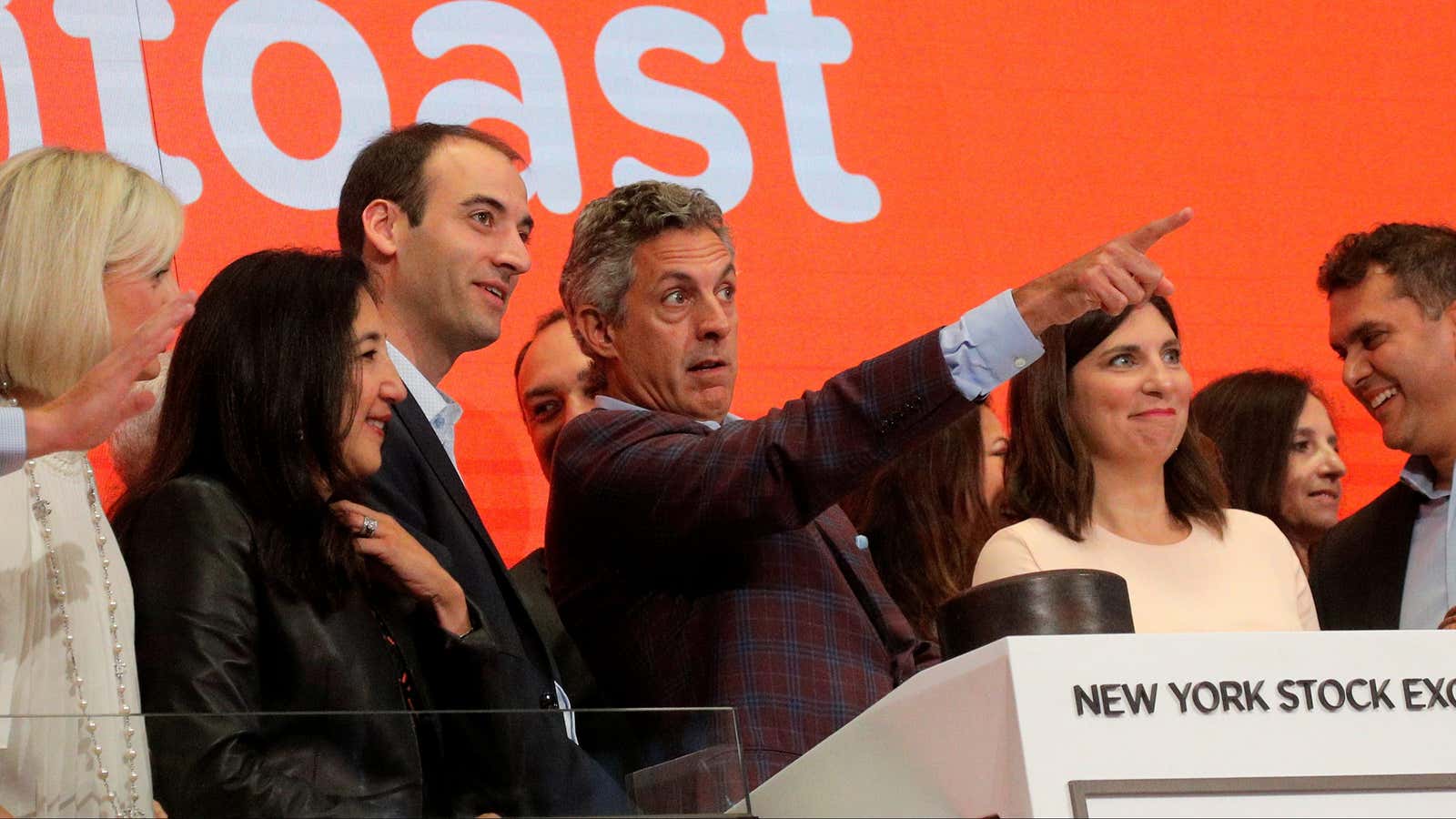Shares of the restaurant software company Toast rose 63% after it went public on Sept. 22, with the company’s valuation climbing to nearly $33 billion, up from $8 billion last November.
It was a swift turn for the startup, which provides cloud-based software to restaurants and took an initial hit from the Covid-19 pandemic. Heightened interest in food delivery and contactless payments ultimately proved to be a positive development for the company, as it attracted more restaurant locations in 2020, which helped boost revenue by 24%.
Toast’s shares were trading at $65.26 on Wednesday (Sept. 22), up from the $40 at which the IPO was initially valued.
Interest in delivery, takeout helps Toast climb back from slump
The Boston startup launched in 2013 and was valued at $4.9 billion following a round of fundraising in February 2020, when CEO Chris Comparato said Toast would “power the restaurant community for decades.”
Just two months later that optimistic plan seemed in jeopardy, as restaurants around the country shuttered due to the Covid-19 pandemic and sales declined by 80%. These shutdowns decimated customer transaction fees, which help make up the majority of Toast’s revenue. In April Comparato announced the startup would slash its staff by 50%, implement a hiring freeze, and halt merit-based pay increases.
The slump didn’t last through 2020, though. While Toast says it saw a “material decline” in in-store dining during the pandemic, the company experienced a “significant increase in orders placed by guests through takeout and delivery channels.” Through December of 2020, Toast offered three months of online ordering, takeout, and restaurant marketing services to new subscribers for free, and saw revenue from subscriptions rise by 62% from 2019.
The heightened interest in food delivery ultimately helped the startup recover revenue processed through Toast’s payment platform, which accounts for billions of dollars annually. While revenue from restaurants using this platform declined by 24% in the second quarter of 2020, it ultimately grew by 17% year-over-year.
Toast expects revenue to fluctuate over time
Even though most US cities have allowed businesses to fully reopen at this point, the pandemic has spurred many restaurants to rethink the way they interact with customers. Many US restaurants have invested in technology to digitize their services, and as of February 57% of consumers surveyed by the National Restaurant Association had used their devices to view a menu online, while 18% had used mobile pay at a restaurant.
Toast has rolled out new products over the past year to meet this shift, developing tools that allow indoor dining customers to order and pay on their phones, for example, or receive notifications for curbside takeout. These investments paid off in the first six months of 2020, during which the startup’s revenue grew by 105% compared to the previous June. But the company warned investors that the economic conditions of the pandemic have been unusual, and this rapid growth is not necessarily indicative of its future performance.
“We expect our revenue growth rate to fluctuate over the short and long term,” Toast wrote in its S-1.
